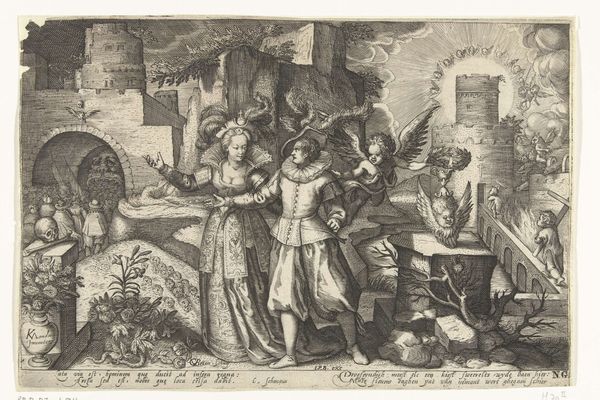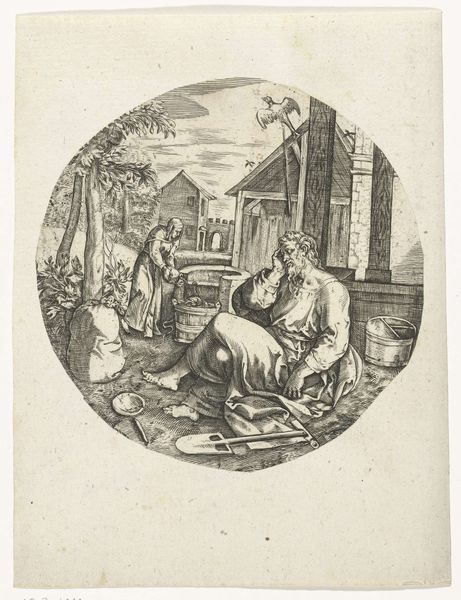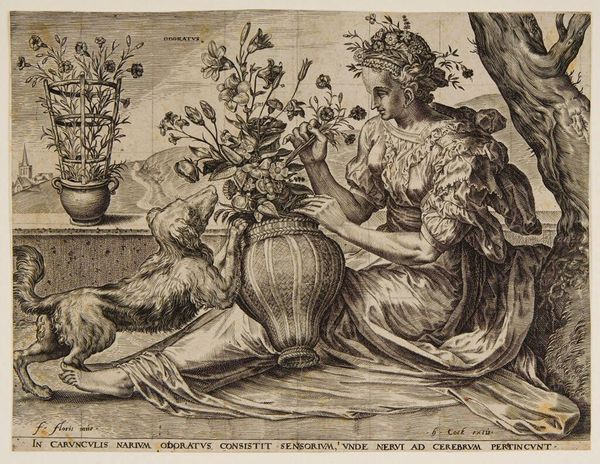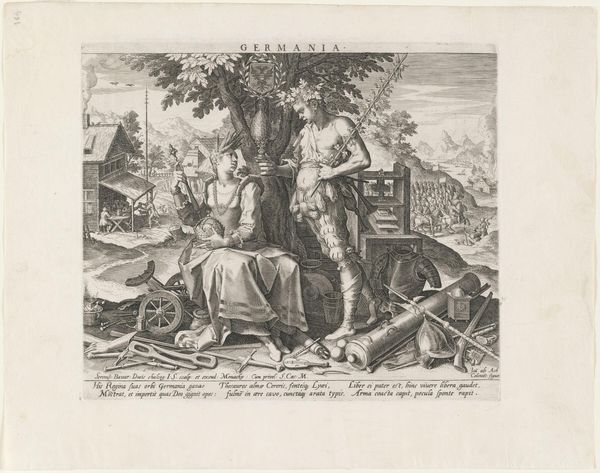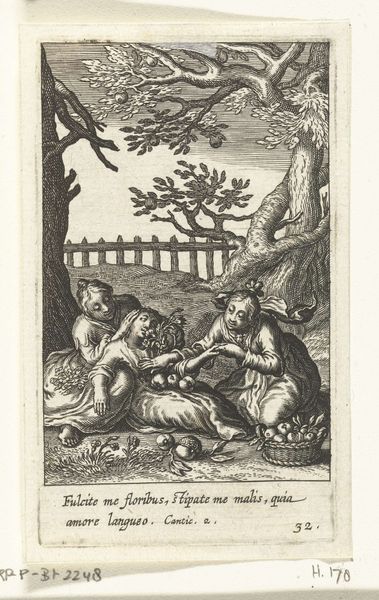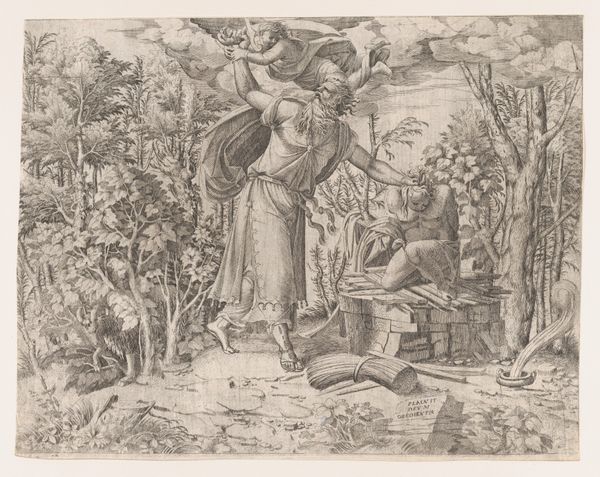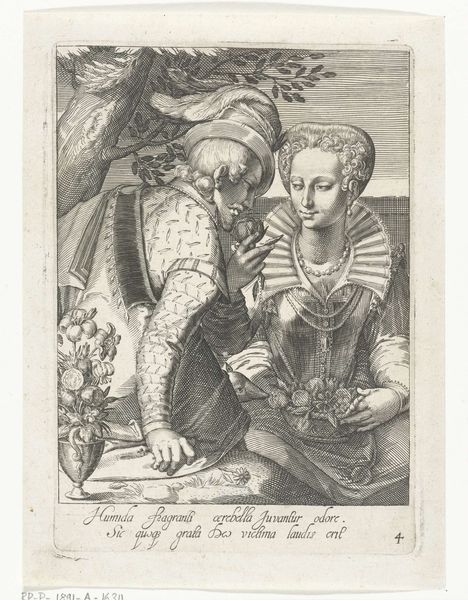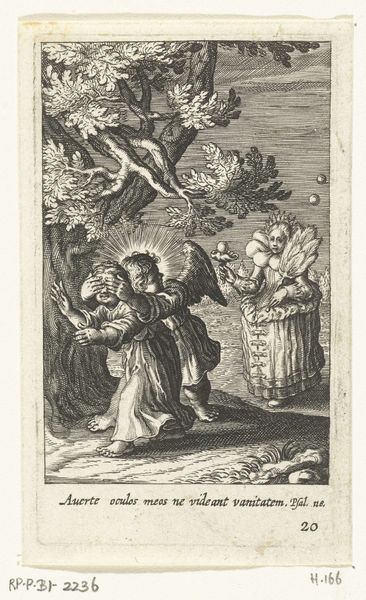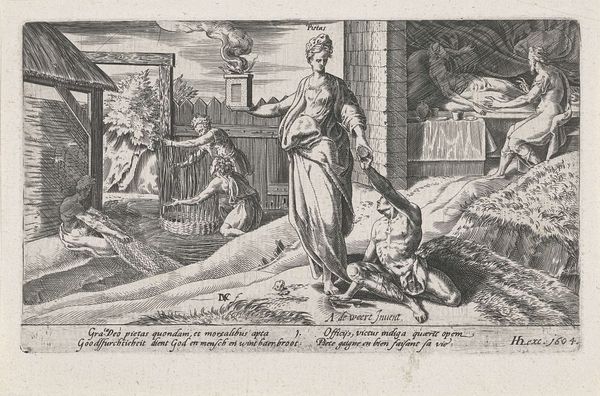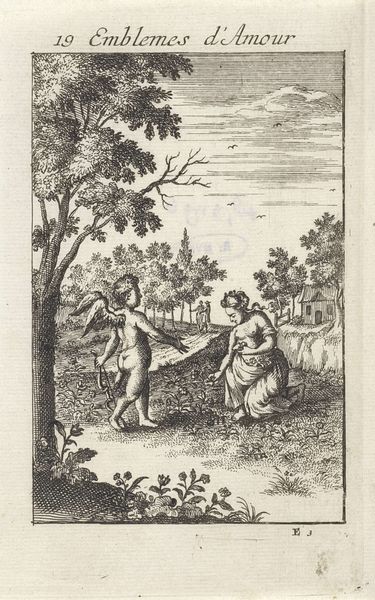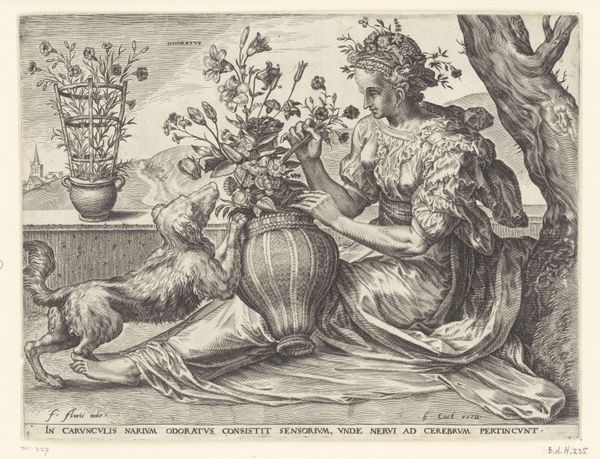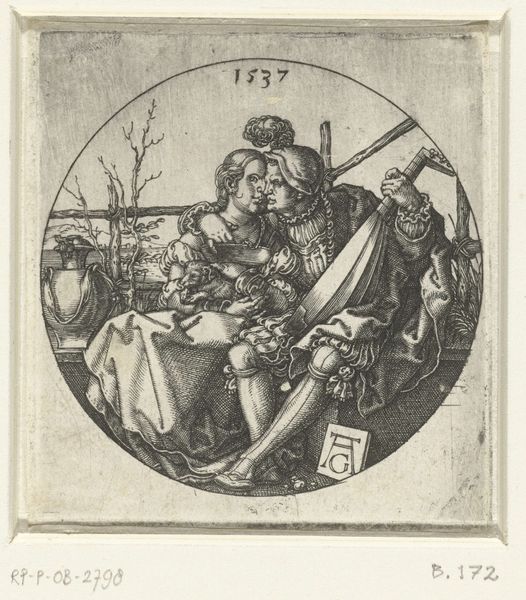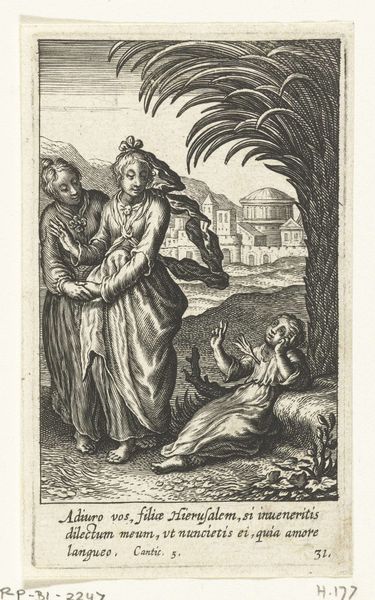
print, engraving
#
allegory
# print
#
landscape
#
figuration
#
genre-painting
#
northern-renaissance
#
engraving
Dimensions: height 205 mm, width 247 mm
Copyright: Rijks Museum: Open Domain
Curator: This is “Veeteelt,” or “Cattle Breeding,” a 1574 engraving by Philips Galle, currently held at the Rijksmuseum. It presents an idyllic pastoral scene with a goddess-like figure at its center. Editor: Oh, it’s… charming! Very classical, but also kind of… rustic? Like a slightly idealized farm tableau. The texture of the engraving really gives it a sense of antiquity, doesn’t it? Curator: Exactly. Galle blends classical allegory with observations of rural life. The central figure represents Pales, the Roman goddess of livestock and shepherds, surrounded by the bounty of the farm. Notice the cows, sheep, and various milk products. Editor: Yes, and the way she's positioned-- almost enthroned amongst the churns and baskets. It feels very staged, consciously constructed. What's most fascinating is the detail in the background, like a snapshot of daily rural life, coexisting with this divine representation. Curator: True. Galle uses meticulous detail to emphasize abundance and the harmony between humans and nature. The precise lines and the shading enhance the textures of everything, from the animals' fur to the wooden churn. The work exists in a space between symbolic representation and an observation of the world as it existed. Editor: I agree. Thinking about composition, that central pyramid formed by Pales and the farm items really anchors the whole image. Her gesture of holding plates of cheese and whatnot extends an offering, creating a sense of connection. What do you think is going on with her vacant stare, though? It makes the image a little eerie. Curator: Interesting observation. That detached gaze is common in allegorical art. She is not engaging with us directly, but embodying an ideal, removed from the everyday concerns of those laboring in the fields. That remove from daily activity actually has more of an emotional resonance to me, than one of realism would have achieved. Editor: I hadn’t considered that before—she is present and a key aspect of the image, yet also apart. Well, “Veeteelt” is truly a lovely mix of artifice and observation! It has definitely made me reevaluate my assumptions about the pastoral tradition. Curator: Indeed, a worthy glimpse into the intricate dance between nature, symbolism, and human craftsmanship that flourished during the Northern Renaissance. It offers insight into the time it was made, and the creative life and spirit of that era.
Comments
No comments
Be the first to comment and join the conversation on the ultimate creative platform.
